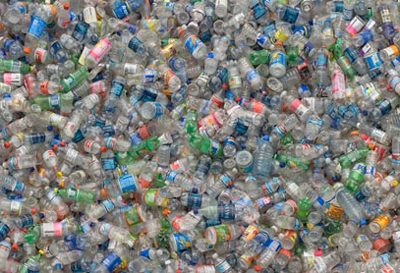More than a 100 million tones of plastic is produced world-wide each year. Disposal of plastic through recycling, burning, or land filling is a myth because it does not undergo bacterial decomposition. Once plastic is produced, the harm is done once and for all. Plastic wastes clog the drains and thus hit especially urban sewage systems. The plastic wastes being dumped into rivers, streams and seas contaminate the water, soil, marine life and also the very air we breathe. Choked drains provide excellent breeding grounds for disease-causing mosquitoes besides causing flooding during the monsoons.
Reasons for Excessive use of Plastic
Plastics are a subspecies of a class of materials known as polymers. These are composed of large molecules, formed by joining many, often thousands, of smaller molecules (monomers) together. Other kinds of polymers are fibers, films, elastomers (rubbers), and biopolymers (i.e., cellulose, proteins, and nucleic acids). Plastics are made from low-molecular-weight monomer precursors, organic materials, which are mostly derived from petroleum, that are joined together by a process called “polymerization.” Plastics owe their name to their most important property, the ability to be shaped to almost any form to produce articles of practical value. Plastics can be stiff and hard or flexible and soft. Because of their light weight, low cost, and desirable properties, their use has rapidly increased and they have replaced other materials such as metals and glass. They are used in millions of items, including cars, bullet-proof vests, toys, hospital equipment, and food containers. More than a hundred billion pounds of plastic were produced in 2000. Their increased use has resulted in concern with (1) the consumption of natural resources such as oil, (2) the toxicity associated with their manufacture and use, and (3) the environmental impact arising from discarded plastics.
Project Area: Yavatmal
It is seen that in Yavatmal City the use of plastic bags are increases in a last decade. Due to that the use of the other subsidiary products are decrease or some of them are vanished. As a plastic is having an inverse effect on the environment (littering ocean
contamination, other environment pollution, health hazards, etc.), it should be avoided by the people In Yavatmal City on an average there are 400 to 500 outlets who ever using the plastic bags and plastic related products. Due to which on an average on daily basis there is 50kg plastic is come to use. Which is not able to destroy easily and can hazard the environment? The plastic took near about the 6 generation to vanish or destroy as a research done in Europe. Due to that we are increasing it daily and it will take 300 years to vanish.
For avoiding the hazardous effect on environment it should be knew to the people about it. An awareness program with the attachment of the society can be helpful to solve the problem.
Objective of this Project:
- To aware the people about the plastic bags uses.
- Guidance and Making use too of the subsidiary products instead of Plastic Bags.
- Thin jute bags or cloth bags would be offered to hotels/vegetable vendors as alternatives to the plastic ones used now to pack food items.
- The Training for various batches of SHG members would be held under the Swarna Jayanthi Swarozgar Yojana scheme.
- SHG members would be trained in stitching jute bags and other cloth bags.
- Mass Awareness programmes on Hazards of Plastic Waste and information on cloth and jute bags which can very well act as a substitute for plastic bags.
- To motivate civic groups and students to implement this programme. The activity aims to involve all associations, schools, colleges and Government to actively involved in creating awareness in Yavatmal city. The project will focus on building a group to co-ordinate these activities and sustain these activities for a longer period.
- Use of Media for Awareness Campaigns such as :
Local and National Newspapers in the Yavatmal
Campaigns on Television
Voicemail Messages
Use of Social Media such as Whats APP, Face book etc for campaigns
Actual images of Project Location

